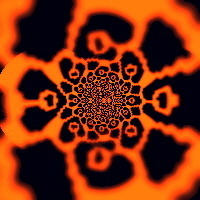게임엔진(GameEngine)/Unreal4
- String 과 FString 변환, String Conversions: FString to FName, FString to Int32, Float to FString 2016.07.12
- c++에서 구조체를 블루프린트로 나타내기, 핀 분할, 재결합까지 표현 2016.07.08
- 언리얼4 Blueprint 에서 unit64 사용하기 2016.07.08
- C++에서 블루프린트 함수 호출하기 .2 인자와 같이 넘기기 2016.07.08
- C++에서 블루프린트 함수 호출하기 .1 2016.07.08
- c++ 에서 블루프린트 이벤트 호출하기 2016.07.08
- 델리게이트 (Delegate) 2016.07.07
- UGameInstance, 싱글톤 생성 부모 클래스 2016.07.06
- 언리얼4에서 C++ 로 싱글톤, Game Instance 2016.07.06
- BeginPlay VS Constructor? 2016.07.06
- FSocket 소켓 만들어 네트웍 연결 하기 2016.07.04
- 마티네에서 이벤트 트렉이 발동 되지 않을 때 체크해봐야 하는 것? 2016.07.01
- enum 타입의 오브젝트들을 픽킹한 오브젝트를 얻는 함수 GetHitResultUnderCursorForObjects 2016.06.23
- Event End Play / Event Destroyed 이 둘의 차이점을 보던 중 폐기 예정중 이라는 소식 2016.06.22
- 실행도중 레벨 열기 Level streaming 2016.06.22
- Pure 함수 Impure 함수 (const function) 2016.06.10
- 블루프린트에서 함수 오버라이드 할때 이벤트로 생성 되는 현상? 2016.06.10
- 컨스트럭션 스크립트 2016.06.10
- 마테네 카메라 그룹에 이벤트 트렉을 추가하여 이벤트 발동 시키기 2016.06.03
- 액터는 자동 소멸이 아니다 2016.06.02
- 커서아래 클릭한(Hit)한 오브젝트를 가져오는 함수 Get Hit Result Under Cursor for Objects 2016.06.01
- DoN 과 DoOnce 2016.06.01
- Default Pawn (디폴트 폰) 게임 모드에서 사용하는 기본 폰, 관람자 폰 SpectatorPawn 2016.05.27
- 액터 레퍼런싱 과 Target 2016.05.20
- 마티네 , 엑터, 오브젝트에 애니메이선을 적용해보자 2016.05.19
- Unreal4 & 안드로이드 빌드 와 ETC1 VS ETC2 2016.05.18
- Spawn Emitter at Location does not auto destroy 2016.05.18
- 콜리전 기본 규칙 Block , Hit 2016.05.17
- Collision Presets (콜리전 프리셋) 2016.05.17
- Event 충돌 관련 및 주로쓰이는 이벤트들 2016.05.17
